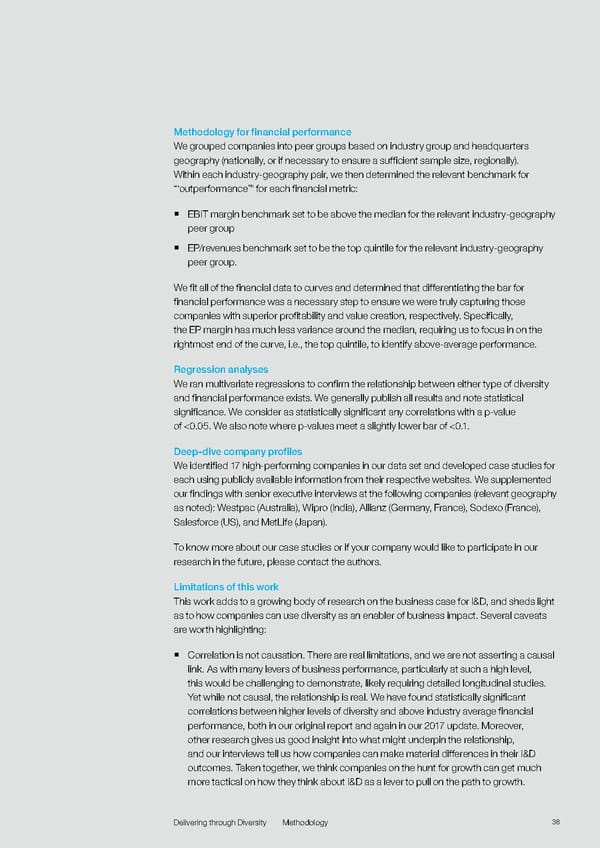Methodology for financial performance We grouped companies into peer groups based on industry group and headquarters geography (nationally, or if necessary to ensure a sufficient sample size, regionally). Within each industry-geography pair, we then determined the relevant benchmark for “‘outperformance’” for each financial metric: ƒ EBIT margin benchmark set to be above the median for the relevant industry-geography peer group ƒ EP/revenues benchmark set to be the top quintile for the relevant industry-geography peer group. We fit all of the financial data to curves and determined that differentiating the bar for financial performance was a necessary step to ensure we were truly capturing those companies with superior profitability and value creation, respectively. Specifically, the EP margin has much less variance around the median, requiring us to focus in on the rightmost end of the curve, i.e., the top quintile, to identify above-average performance. Regression analyses We ran multivariate regressions to confirm the relationship between either type of diversity and financial performance exists. We generally publish all results and note statistical significance. We consider as statistically significant any correlations with a p-value of <0.05. We also note where p-values meet a slightly lower bar of <0.1. Deep-dive company profiles We identified 17 high-performing companies in our data set and developed case studies for each using publicly available information from their respective websites. We supplemented our findings with senior executive interviews at the following companies (relevant geography as noted): Westpac (Australia), Wipro (India), Allianz (Germany, France), Sodexo (France), Salesforce (US), and MetLife (Japan). To know more about our case studies or if your company would like to participate in our research in the future, please contact the authors. Limitations of this work This work adds to a growing body of research on the business case for I&D, and sheds light as to how companies can use diversity as an enabler of business impact. Several caveats are worth highlighting: ƒ Correlation is not causation. There are real limitations, and we are not asserting a causal link. As with many levers of business performance, particularly at such a high level, this would be challenging to demonstrate, likely requiring detailed longitudinal studies. Yet while not causal, the relationship is real. We have found statistically significant correlations between higher levels of diversity and above industry average financial performance, both in our original report and again in our 2017 update. Moreover, other research gives us good insight into what might underpin the relationship, and our interviews tell us how companies can make material differences in their I&D outcomes. Taken together, we think companies on the hunt for growth can get much more tactical on how they think about I&D as a lever to pull on the path to growth. Delivering through Diversity Methodology 38
 Delivering Through Diversity Page 39 Page 41
Delivering Through Diversity Page 39 Page 41